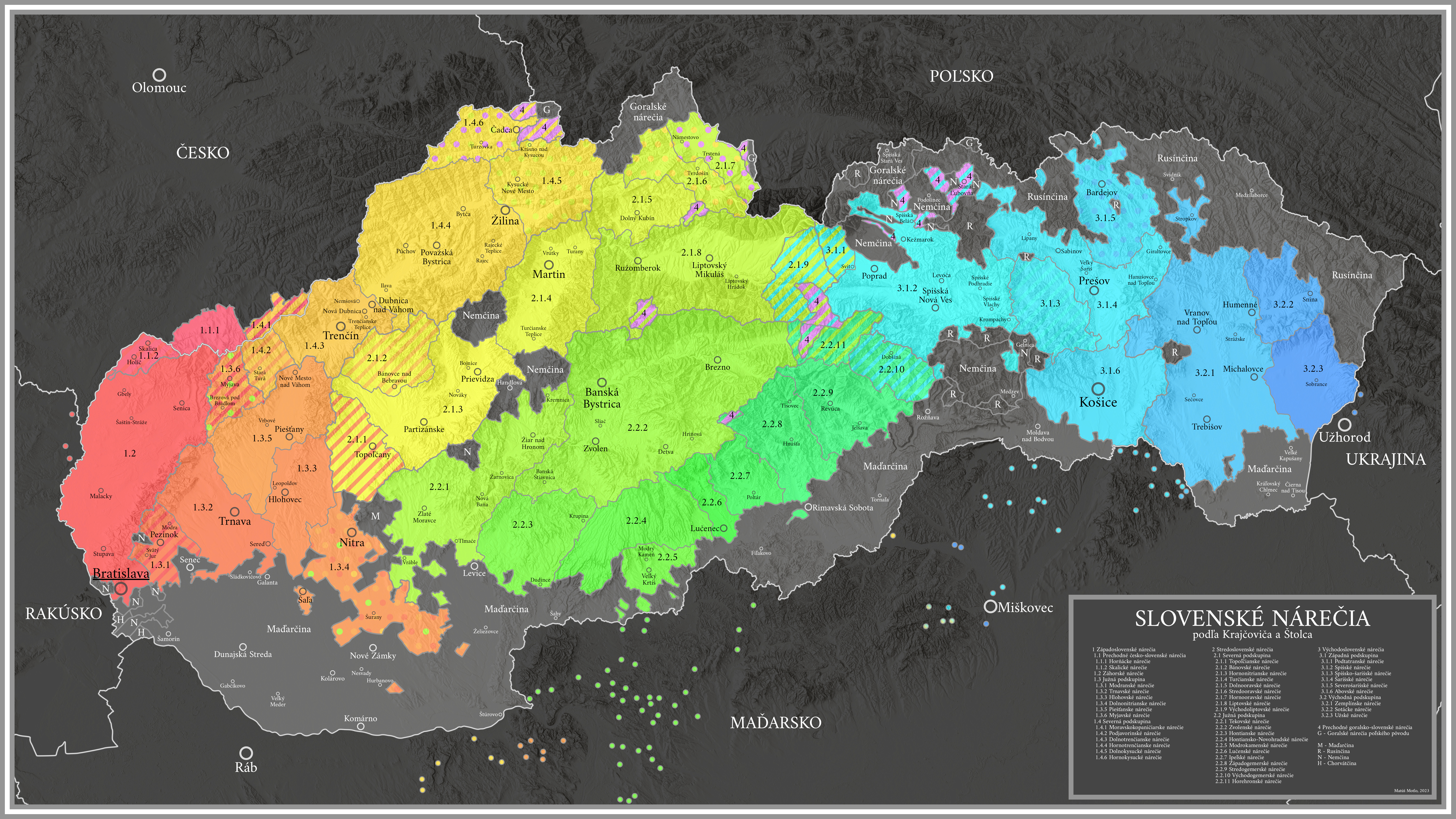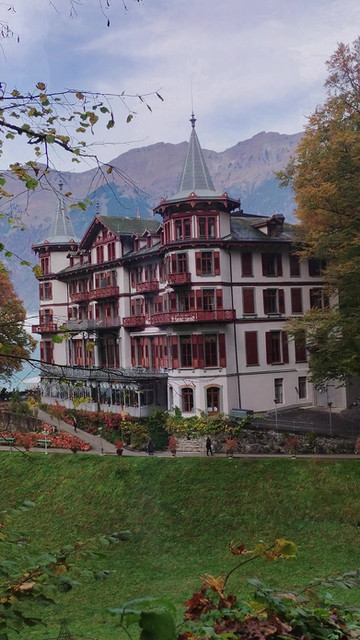HOME | DD
 WendishAstronomer — Slovak Dialects Revisited
by-nc-nd
WendishAstronomer — Slovak Dialects Revisited
by-nc-nd

#history #dialect #easterneurope #europe #european #europeanhistory #historical #language #linguistics #slavic #slovak #slovakia #mapsandflags #slavicculture #maps_and_flags
Published: 2024-03-01 08:40:00 +0000 UTC; Views: 4269; Favourites: 45; Downloads: 20
Redirect to original
Description
A new version of my map of Slovak dialects, hopefully more informative than the last one. I've distinguished border dialects this time (both transitional, symbolized by stripes, and originally lightly populated areas where different dialect groups mixed as they were colonized by settlers from far-stretching regions of Slovakia, symbolized by either green circles, Central Slovak influence, or dark blue circles, Far Eastern Slovak influence). Hope you like it.Slovak is usually classified as a Western Slavic language diverse in dialects, out of all the Slavic languages outmached only by Slovene. They're often divided into 3 major groups, Western (2), Central (3) and Eastern (4) Slovak. Western and Eastern Slovak are both almost exclusively Western Slavic, their major differences being their rhythm, vocabulary and accent, with Western Slovak being closer to Czech and Eastern Slovak to Polish, while also being more liberal with borrowing from Hungarian. Central Slovak dialects, while overall serving as a bridge between the two groups, also have a fair share of "alien" linguistic features, closely resembling South Slavic languages, especially Slovene, and Kajkavian, the language historically spoken in and around Zagreb, the capital of Croatia. These are thought to have possibly entered the dialects with South Slavic refugees fleeing either the Avars or the Old Hungarians, but the theory that Central Slovak had been a transitional dialect into Pannonian Slavic since its inception has been gaining traction recently.
While the ancestors of Slovaks, the early Slavs, had been living in Slovakia since the late 5th century AD, and formed multiple polities prior to the Hungarian invasion, like the principality of Nitra, the earliest complete texts in various Slovak dialects date to the 15th century, when Slovak and Slovakized Czech had begun replacing Latin as the cultural language of Slovaks, although Slovak toponyms, personal and family names and short words and phrases had been recorded substantially earlier. The earliest (late 18th century) attempts at codifying Slovak were based mostly on the Trnava (2.2.2) dialect, as Trnava was an important religious and cultural centre of Slovakia, but modern Standard Slovak, codified in 1846 and substantially revised in 1852, is based in large part on the Liptov (3.1.8) dialect, as it was, at the time, considered the "purest Slovak", supposedly untainted by foreign influence. Standard Slovak still retains substantial Western Slovak influence, which has been rising since Bratislava was made the Slovak capital in 1918, making it, in a sense, a compromise.
The largest minority in Slovakia are the Hungarians, who speak a Ugro-Finnic language, Hungarian (M). They arrived in the Carpathian basin in the late 8th and early 9th centuries, and had conquered most territories in modern-day Slovakia by the late 11th century AD. Originally a nomadic nation, the Old Hungarians quickly adopted a settled way of life, absorbing a significant amount of Slavic, and, to a lesser extent, Germanic vocabulary along the way, especially related to familiar terms, toponyms, animal husbandry and terms related to artisanship.
Germans (N) started colonizing Slovakia in the mid-13th century, after the Mongols has destroyed wast swathes of Slovakia, notably Bratislava and its vicinity, and some parts of Spiš, which were fully decimated. They were expelled after WW2 by the Czechoslovak government, supposedly for cooperating with the Nazis. As to how an entire ethnic group composed of more than a hundred thousand people, each with their own ambitions, experiences and opinions, can all collectively be responsible for the actions of some individuals, I'm unable to explain.
Goral (5; G) and Rusyn (R) dialects, both Slavic, entered Slovakia during the 14th to 17th centuries with the Wallachian migrations, when shepherds were settled in areas mostly unconductive to farming. Goral dialects are most often classified as Polish or transitional Polish-Slovak, while Rusyn is considered a distinct language in Slovakia and other countries where it's spoken, except for Ukraine, where it's considered a Ukrainian dialect.
The last language to gain a majority anywhere in Slovakia was Croatian (H). As a consequence of constant Turkish raids targeting Croatia in the 16th century, a countless number of Croats migrated to Slovakia and other neighboring countries. Most Croat villages, like Chorvátsky Grob, or Devínska Nová Ves, had already been assimilated into the Slovak sea in the late 19th to early 20th centuries, with only Jarovce and Čunovo retaining a lively Croatian minority to this day.
Related content
Comments: 6

👍: 0 ⏩: 1

👍: 0 ⏩: 0

👍: 0 ⏩: 1

👍: 1 ⏩: 0

👍: 0 ⏩: 1

👍: 1 ⏩: 0





















